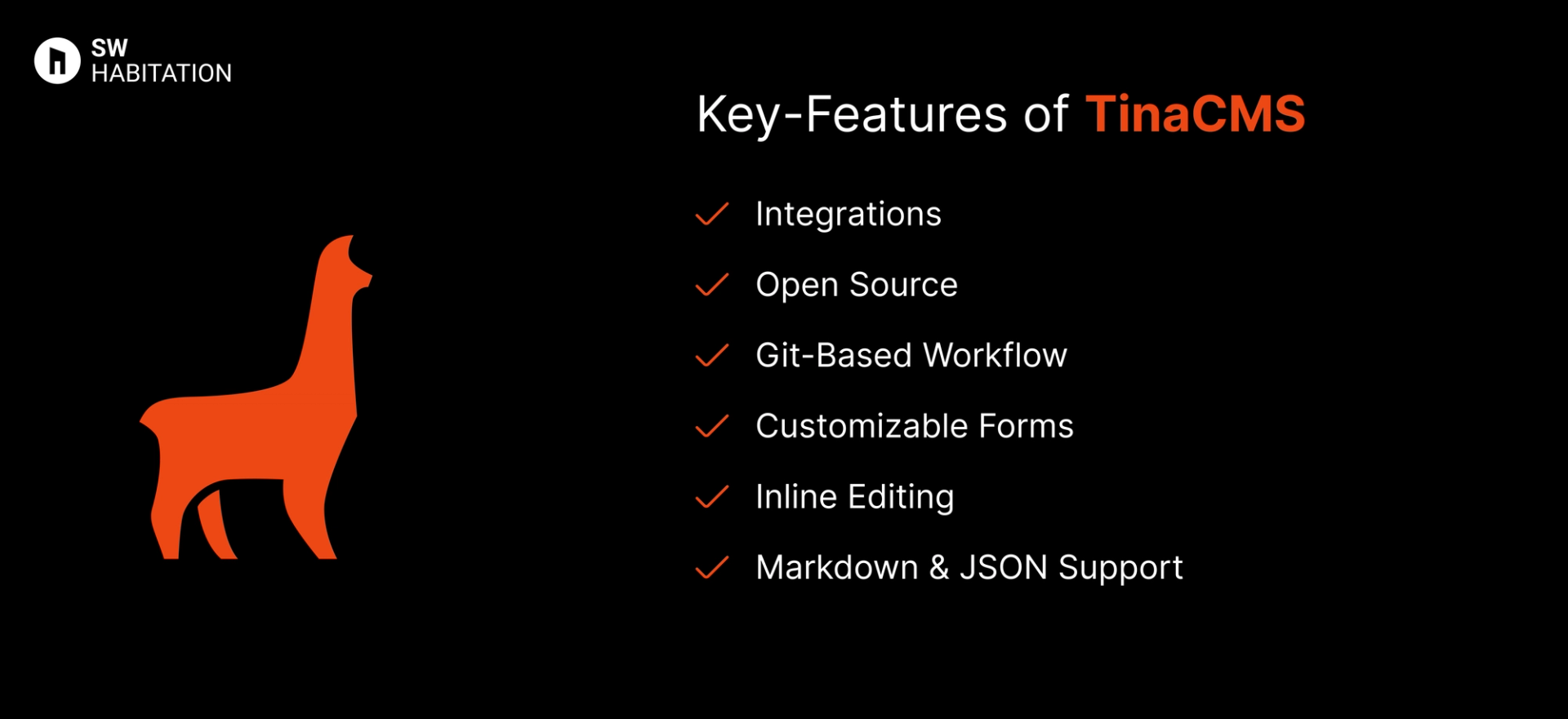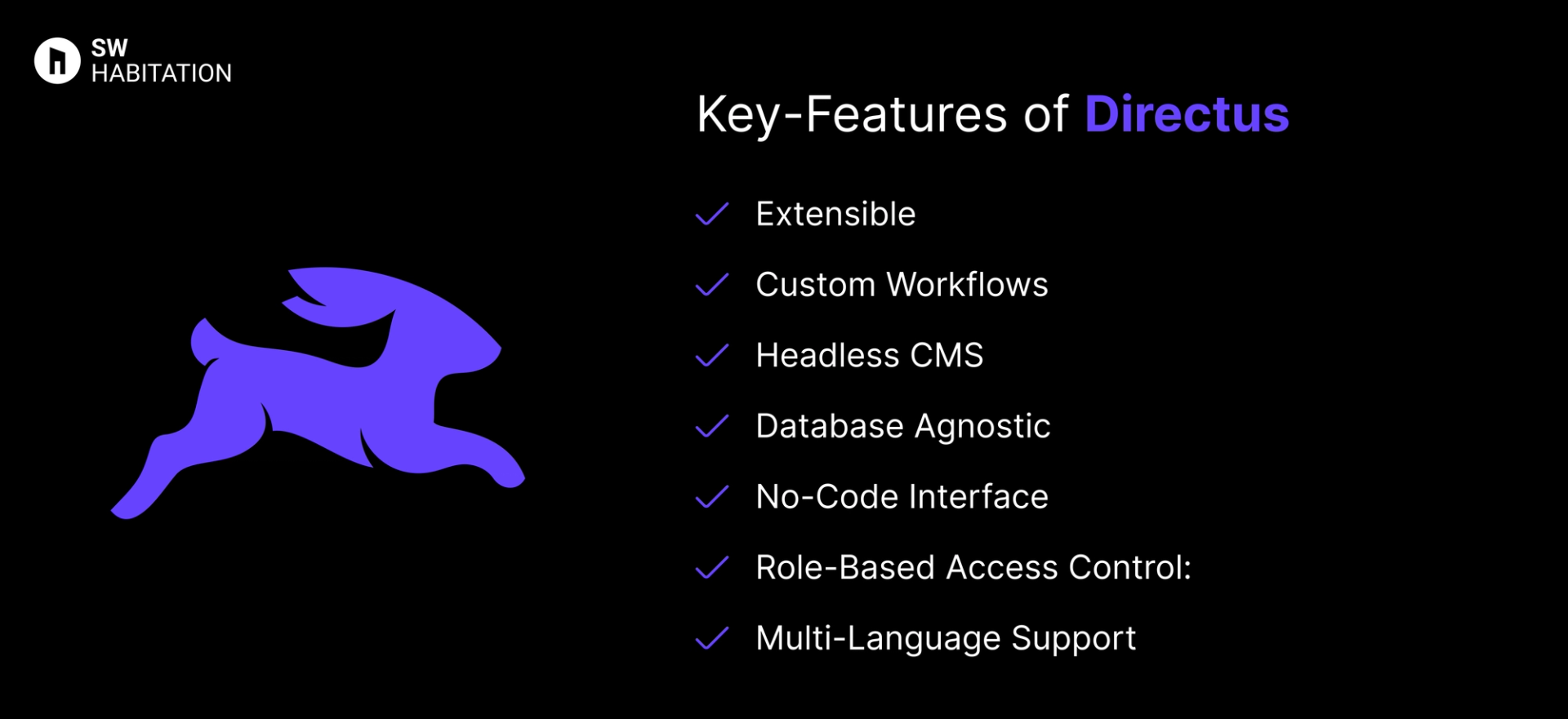TinaCMS vs. Directus

TinaCMS

Directus
You know, when you wanna make a website or a blog but don’t wanna mess with too much code? That’s where a CMS (Content Management System) comes in. It’s like a super easy tool that helps you add text, pictures, and videos to your site without needing to be a tech genius. You just log in, click a few buttons, and your content is live. It's quite simple, right?
What is TinaCMS?
TinaCMS is an open-source, Git-backed CMS that brings real-time editing to the forefront. It integrates directly into your site’s codebase, allowing content editors to make changes and see them live instantly. Think of it as giving your content team superpowers they can twist content without diving into code, while developers still enjoy full control over the project.
It’s especially popular in the Jamstack ecosystem, working well with static site generators like Next.js, Hugo, and Gatsby.
Key Features of TinaCMS


- Integrations: Works with Next.js, Gatsby, and other static site generators.
- Open Source: Free and community-driven, with no vendor lock-in.
- Git-Based Workflow: Content is stored in your Git repository, making version control simple.
- Customizable Forms: Easily create forms for content editing.
- Inline Editing: Make changes directly on the page and see them live instantly.
- Markdown & JSON Support: Works seamlessly with markdown and JSON-based content.
Advantages of TinaCMS
- Customizable: Adapt it to fit your project’s structure and needs. Free & Open Source: No hidden fees use it as you like.
- Jamstack-Friendly: Works beautifully with static site generators.
- Git Integration: Content is version-controlled with Git.
- Real-Time Editing: See changes instantly while editing.
Disadvantages of TinaCMS
- Limited Ecosystem: Smaller plugin ecosystem compared to more established CMS options.
- Git Knowledge: Editors might need a basic understanding of Git workflows.
- Developer Setup Required: Needs developer setup initially.
What is Directus?
Directus is an open-source headless CMS that wraps around any SQL database, turning it into an instantly accessible API.
Think of it as a control panel for your database, giving you a clean interface to manage content without dictating how your front end should work. Whether you’re building a website, app, or internal tool, Directus lets you work with your data the way you want.
Key Features of Directus


- Extensible: Supports plugins, custom modules, and integrations.
- Custom Workflows: Set up automated actions and webhooks for custom workflows.
- Headless CMS: Provides REST and GraphQL APIs for fetching content anywhere.
- Database Agnostic: Works with any SQL database like PostgreSQL, MySQL, or SQLite.
- No-Code Interface: Friendly UI for non-technical users to manage content.
- Role-Based Access Control: Manage user permissions at a granular level.
- Multi-Language Support: Handle translations directly in the CMS.
Advantages of Directus
- Highly Flexible: Can handle everything from small projects to enterprise-level applications.
- Open Source: Free to use and extend.
- Great for Developers: Full access to the database and API.
- Complete Control: Wraps around your existing database without locking you into a specific structure.
- User-Friendly: Non-technical users get a simple UI to manage content.
Disadvantages of Directus
- No Pre-Built Frontend: You’ll need to build your frontend separately.
- Learning Curve: Offers a lot of flexibility, which can be overwhelming for beginners.
- Self-Hosting Complexity: Requires setting up a database and environment if self-hosting.
Comparison Between TinaCMS vs Directus
Use Cases of TinaCMS
- Markdown Blogs: Perfect for blogs or documentation sites using markdown.
- Developer-Centric Workflows: Ideal for teams that use Git for content management.
- Real-Time Editing: Great when you want instant content updates.
- Jamstack Projects: Ideal for static site generators like Next.js and Gatsby.
Use Cases of Directus
- Multi-Language Sites: Native support for handling multiple languages.
- Teams with Developers and Editors: Developers get full database access, while editors get a clean UI.
- Data-Driven Projects: When you need full control over your database and APIs.
- Custom Apps: Ideal for mobile apps, internal tools, or dashboards.
Other Resources
Conclusion
Headless CMS platforms make managing your website very simple and easy. Whether you’re running a blog, online store, or business, they handle the tough stuff so you can focus on your content.
With a user-friendly interface and the ability to work with any technology, you can create a site that really fits your needs.
These platforms are flexible, secure, and can grow with you. They offer features like custom content, easy editing, and integrations with other tools. Choose the one that fits your requirements and start building your dream website today 🚀
Frequently asked questions
Is TinaCMS good for non-tech users?
While TinaCMS is developer-friendly, content editors will also love its intuitive, in-context editing experience. With some initial setup, non-technical users can easily manage their content.
Can I self-host TinaCMS or use the cloud?
You can self-host TinaCMS, which gives you full control over your content management system, or you can opt for the cloud version for convenience and reduced setup time.
Can I use TinaCMS with Next.js?
Yes, TinaCMS is fully compatible with Next.js and can also be used with other modern JavaScript frameworks. It's particularly great when working with static sites.
Does TinaCMS support Markdown?
Yes, TinaCMS is Markdown-centric and integrates seamlessly with your existing markdown files. You can edit content directly in your Git repository or via the in-line editor.
Is Directus just for developers?
Nup, While developers appreciate the customization and flexibility, editors and content creators will enjoy its clean and easy-to-use admin interface that requires no coding knowledge.
Can I self-host Directus?
Yes, you can self-host Directus on your own infrastructure or choose the Directus Cloud for a managed experience. The choice is yours based on your needs and preferences.
Can I use my own database with Directus?
Yes, Directus doesn’t require you to migrate to a new database, it connects directly to your existing SQL database and provides a user-friendly CMS interface.
Does Directus support REST or GraphQL?
Yes, Directus provides both REST and GraphQL APIs, so you can choose the one that best fits your project’s needs.
